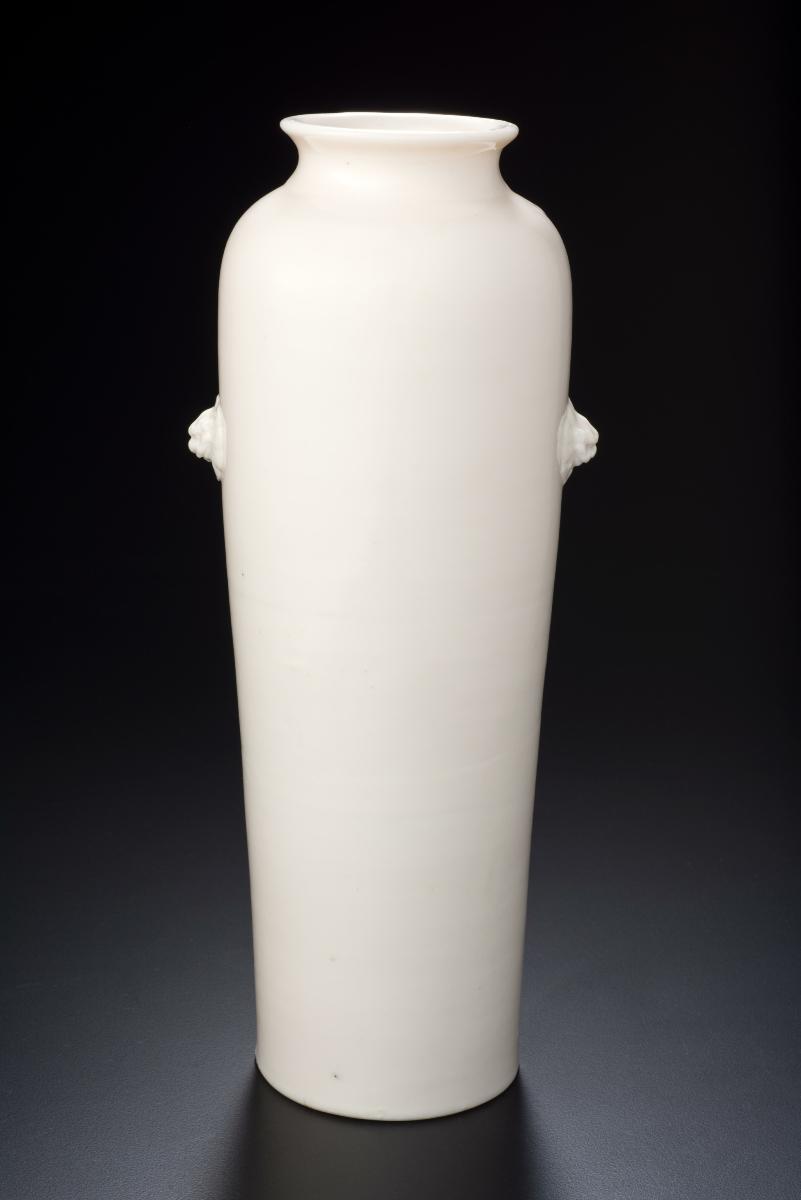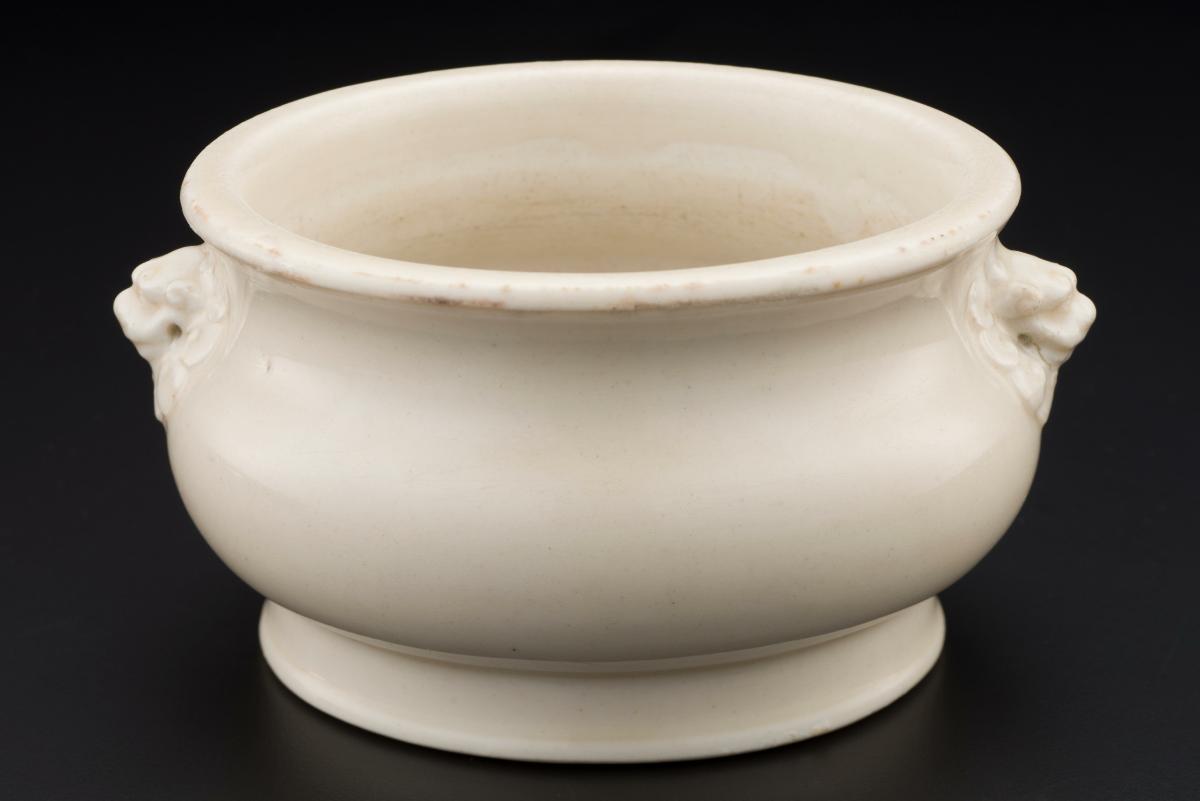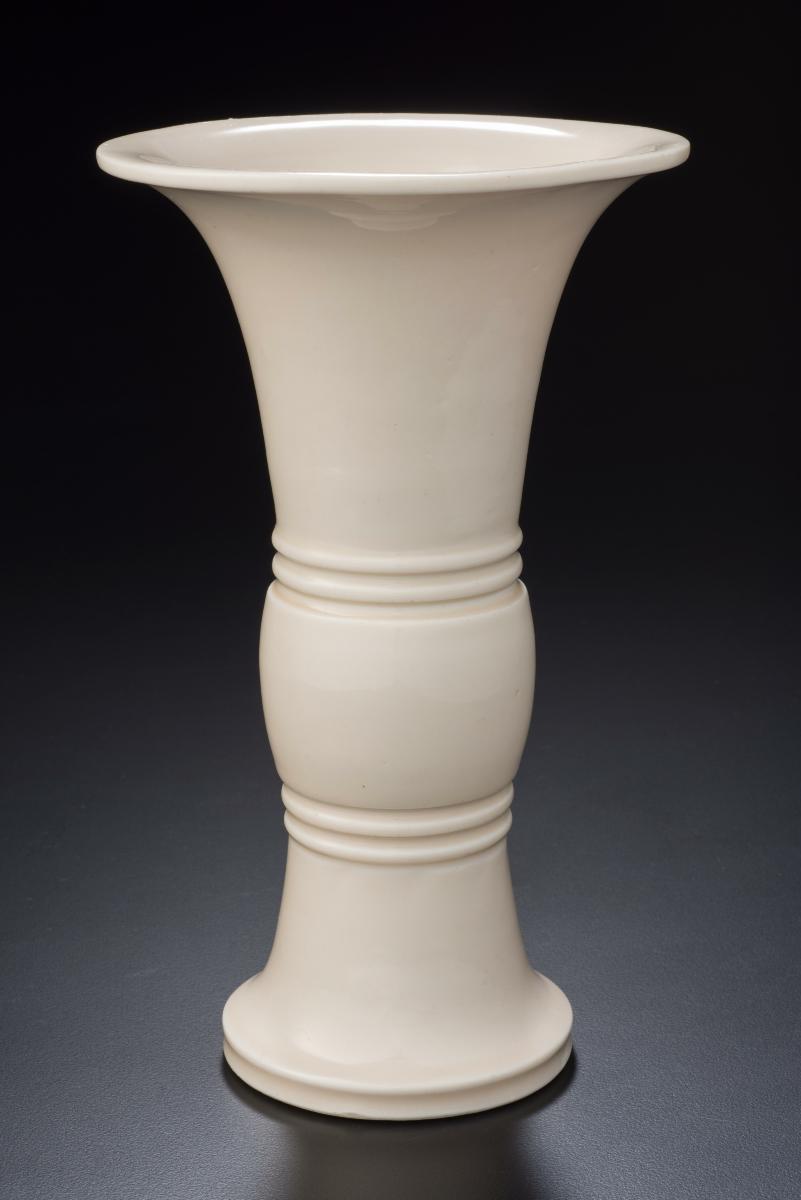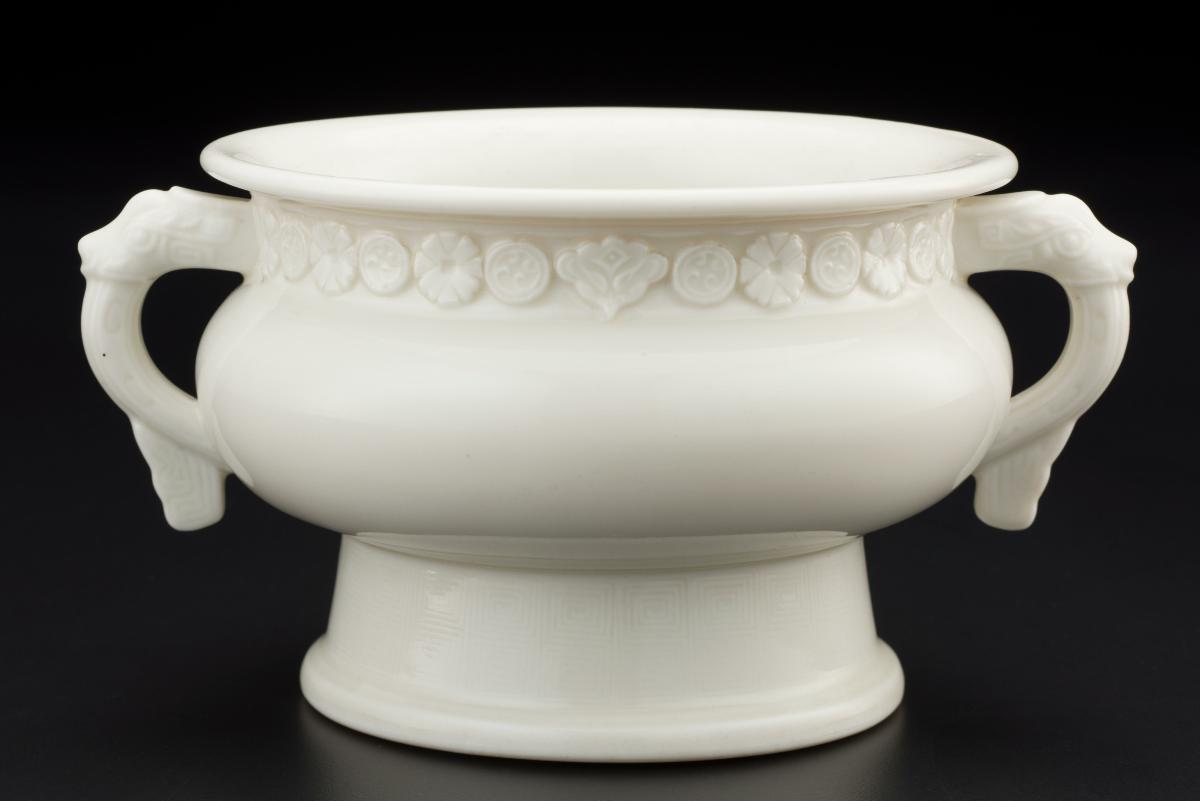This tall cylindrical vase with high rounded shoulder and slightly tapered body has archaic lion-mask motifs applied to the walls. The shape is very similar to the vases made at Jingdezhen during the Transitional Period (1620–1683). The transition from Ming to Qing rule saw the decline and revival of the Imperial kilns at Jingdezhen under the auspices of the Qing Emperor Kangxi (1622-1722). Private kilns increased production of wares which included large vases with elaborate narrative scenes, as well as naturalistic and archaic motifs inspired by Shang (c.1700–1027) and early Zhou (1027 –256 BCE) bronze decorations. Similar elements in relief, such as the lion-masks in this example, appear more frequently on Dehua vases and the gui-shaped censers.Dehua, located on the southeast coast of Fujian province, is well known for its production of white porcelain, known to Europeans as 'blanc de Chine'. The earliest Dehua porcelain was produced as early as the 14th century but the production and quality of these porcelain peaked around the 17th and 18th centuries.















